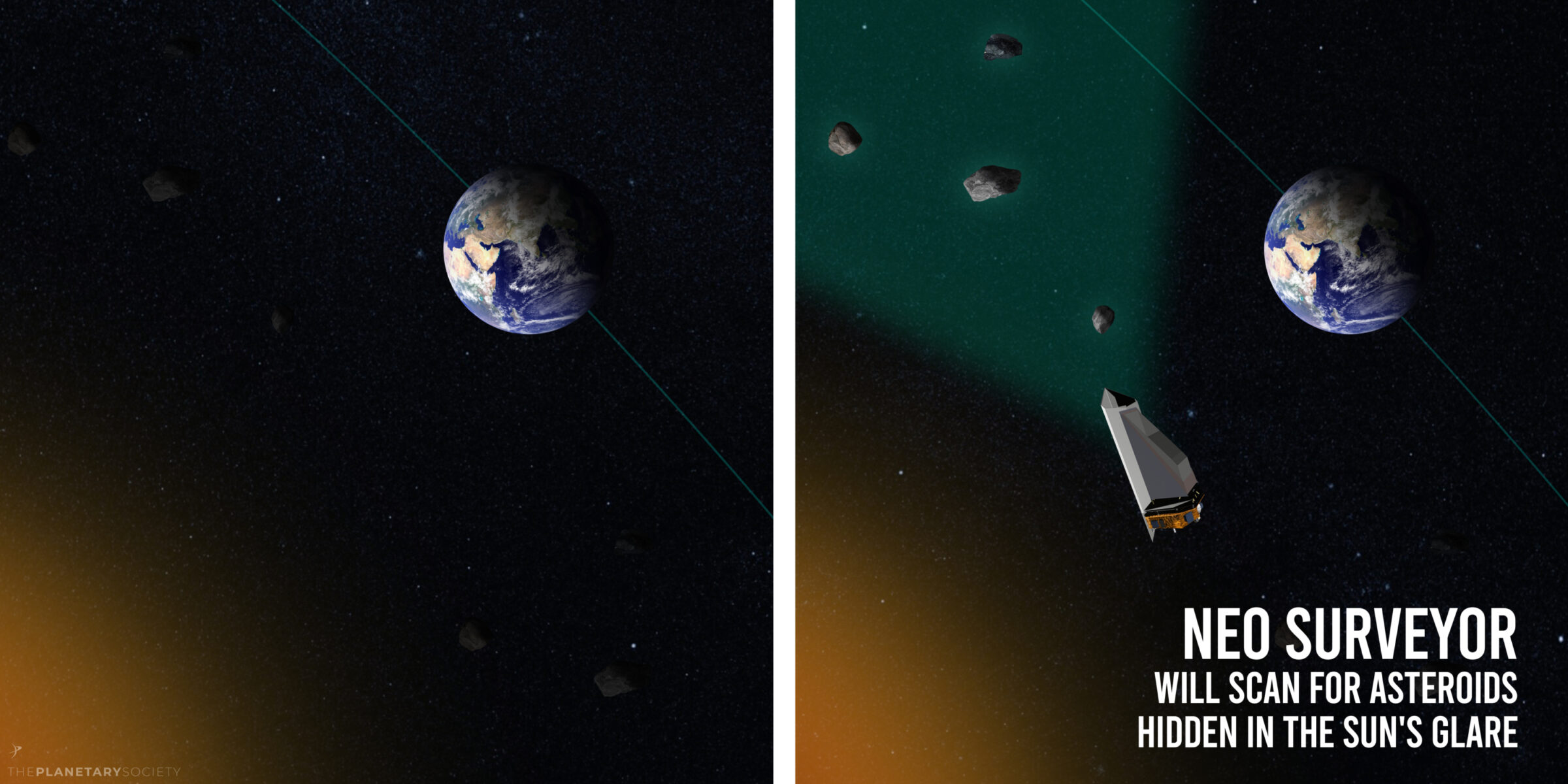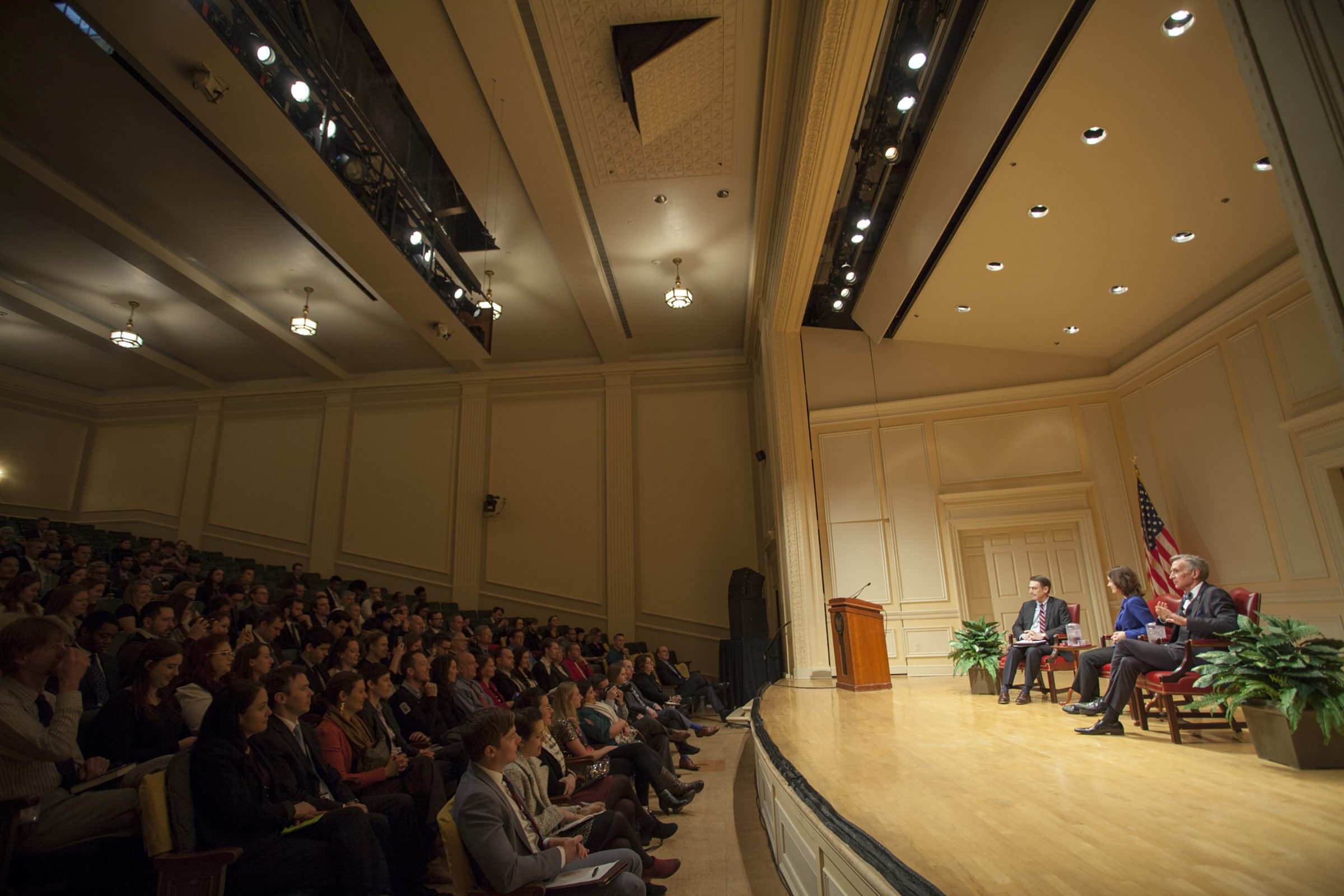Casey Dreier • Dec 14, 2022
NEO Surveyor is confirmed
After more than 15 years, NASA last week moved NEO Surveyor — an asteroid-hunting space telescope and top priority of The Planetary Society’s advocacy efforts in recent years — into its official development phase. This represents the agency’s formal commitment to the project, laying down a firm 2028 launch date and cost estimate of $1.2 billion USD. It is vanishingly rare for a NASA project to suffer cancellation once it reaches this stage.

In NASA management parlance, the project has graduated from formulation to development; basically, from making detailed schematics and testing hardware concepts to building flight hardware. NEO Surveyor now resides in Phase C of the A through F project cycle (system engineers aren’t the most creative, naming-wise). Phase C means that the project team will finalize and build the flight hardware, instruments, and software to be used on the spacecraft, with a particular focus on its telescope, detectors, and the thermal systems used to cool the sensitive infrared equipment. The subsequent Phase D is when all the pieces get assembled. Phase E begins the moment the spacecraft separates from its launch vehicle and it flies free in space, ready to scan the skies for dangerous asteroids, sometime in 2028.
The cost, $1.2 billion, was higher than expected, but a self-inflicted outcome by NASA, which abruptly cut funding for the project in FY 2022 and 2023, triggering layoffs in the projects’ engineering and scientific staff, delaying the procurement of key hardware items, and inadvertently moving the mission’s peak funding timeline into our current high-inflation era.
Despite this, NASA and the White House appear ready to request funds for the project as proposed, and Congress is likely to support it.

NEO Surveyor was the top advocacy priority of The Planetary Society after it was singled out for punishing budget cuts used to cover cost overruns in other projects. Our Day of Action participants hammered home the importance of NEO Surveyor in meetings with Congress, as did more than 5,000 people who wrote their representatives and the White House. The Planetary Society partnered with the National Space Society to release a joint letter defending the mission, and we raised awareness and critiqued NASA’s decision in articles published by major press outlets.
Congress responded this year by adding $55 million (in the House) and $40 million (in the Senate). In addition, the CHIPS and Science Act passed into law earlier this year included a provision directing NASA to develop NEO Surveyor and to avoid cutting its funding again, even if there are overruns in other projects. Final appropriations are yet to come, and compromise negotiations between the House and Senate will determine NEO Surveyor’s final outcome.
Dr. Amy Mainzer, Survey Director for the mission and leader of the team that first proposed the concept in 2005, is understandably elated. “It’s a long way to the launch pad,” she said, “but we’re going get there. We’re excited for the chance to try.”
Support our core enterprises
Your support powers our mission to explore worlds, find life, and defend Earth. You make all the difference when you make a gift. Give today!
Donate

 Explore Worlds
Explore Worlds Find Life
Find Life Defend Earth
Defend Earth

